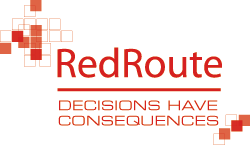


Case study
Client
Major European mobile phone retailer
Sector
Mobile Telephony
Project
We were asked to segment the UK customer base, derive the most optimal allocation of marketing funds across segments, and recommend the most appropriate vehicles for maximising sales to each segment
Analyses and Answers
The market was segmented using combined data on attitudes (from market research), actual behaviours (from real customer transactional data) and actual customer circumstances (from both research and the customer database). The analyses thoroughly understood how people engaged with their mobile phones, what they expected from them and hence how best to market to them.
We then used econometric modelling of historical customer data to measure the past responsiveness of each customer segment to previous marketing activities. These analyses quantified the impact of, and ROI on, all past communications, including both the responsiveness to above-the-line activities such as TV advertising as well as direct marketing and investment in customer service management. In addition to their impacts, the modelling also provided the responsiveness of each segment to differing levels of marketing support, their likelihood to be early adopters, likelihood to be interested in new usage ideas, and their likelihood to buy ancillary services such as insurance.
These were then converted into scoring models using data fusion to project the attitudinal variables across the c. 8 million customers in the customer database.
The results of these analyses enabled us to recommend an optimal allocation and targeting of the marketing budget that would increase the sales revenue from the marketing budget by c.14%.
Actions
Marketing tests were run to validate the results before rolling-out across all segments. The first test involved developing the marketing plan for the launch of a new ‘designer’ phone, identifying which customer segments and which stores should be targeted. The result was the most successful and most profitable new product launch the company had ever achieved up to that date.
The results of these marketing tests were later presented publically by the company as an industry-leading case study on how to use attitudinal as well as behavioural data to both segment and target customers. This presentation was made at a conference in London held by the UK Institute of Direct Marketing in 2006 and each of the leaders of the project team have since become Fellows of the society.
The company also used the results to publish an industry definition of six key types of mobile phone user. A report was produced called “Mobile Life” in which the segments were described and presented, and interesting pen-portraits given of how people related to their mobile phones. This report is still available on the client’s web site.